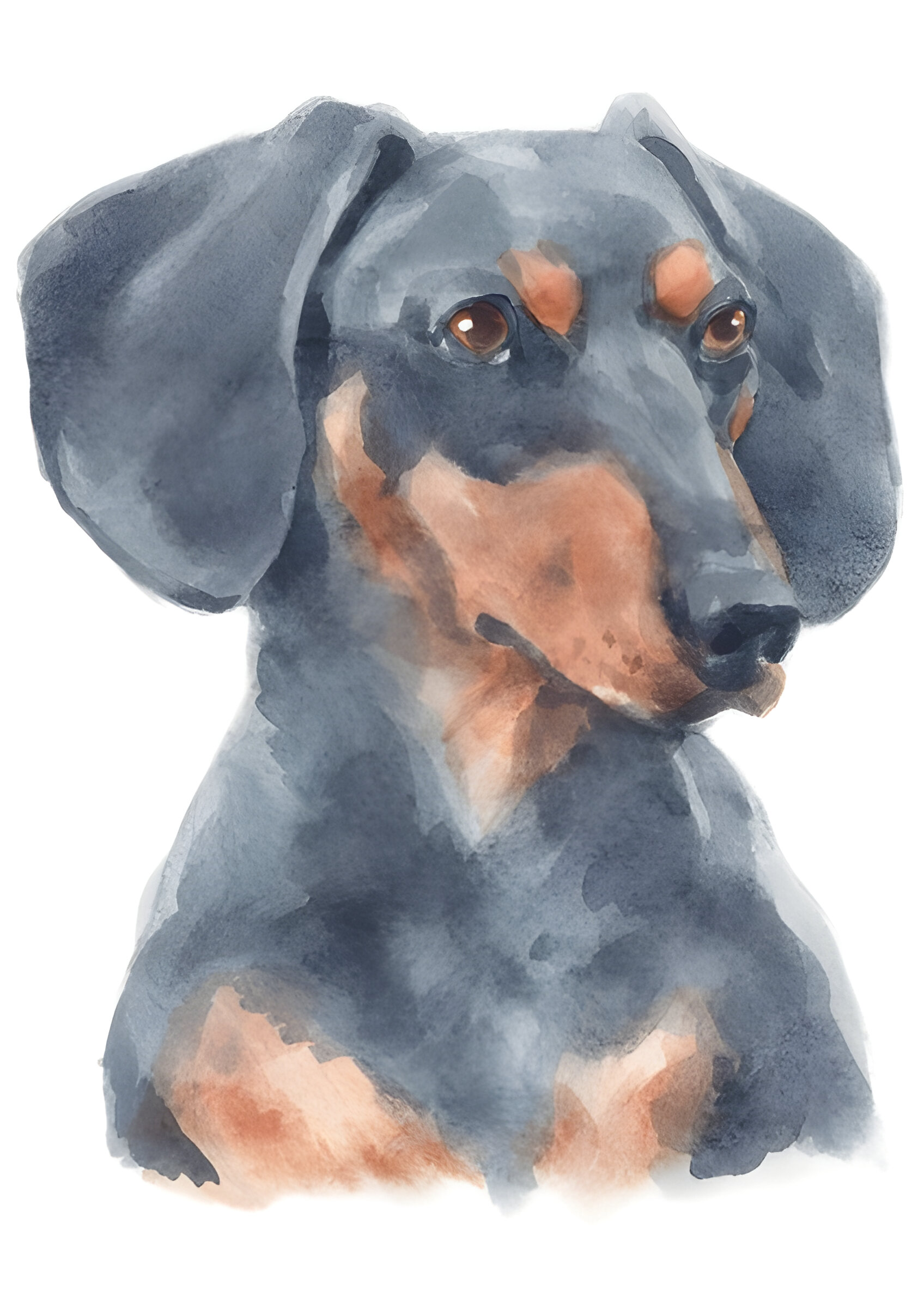Image Credit : Shutterstock
Mini dachshunds have captured the hearts of dog lovers worldwide with their charming personalities and adorable looks. These pint-sized pooches, often referred to as “mini weenie dogs,” are known for their long bodies, short legs, and mischievous nature. Despite their small stature, mini dachshunds have a big presence and require proper training to ensure they become well-behaved companions.
Training a mini dachshund has an impact on their overall behavior and adaptability to family life. This guide aims to provide essential tips for raising and educating these spirited little dogs. It covers understanding their unique temperament, effective training techniques, and ways to address common behavioral challenges. By following these strategies, owners can help their mini dachshund puppies grow into well-adjusted adult dogs, ready to bring joy and companionship to their homes.
Understanding Mini Dachshund Temperament
Mini dachshunds have a friendly and upbeat temperament, making them delightful companions. These small dogs are known for their playful nature and moderate exercise needs. Despite their size, they possess a big-dog bark and a spunky attitude that often surprises new owners.
Curious and Adventurous Nature
Mini dachshunds have a strong hunting instinct, stemming from their breeding as hound dogs. They excel when given opportunities to chase, dig, and burrow, which aligns with their natural instincts. Their curious nature drives them to explore their surroundings, often with their noses to the ground. This adventurous spirit makes them entertaining pets but also requires careful supervision to ensure their safety.
Independence and Family Bonds
While mini dachshunds are affectionate and form strong bonds with their families, they also have an independent streak. This can sometimes lead to stubbornness during training sessions. However, their love for affection makes positive, reward-based training methods highly effective. These dogs thrive on companionship and often become devoted family pets, offering warmth and loyalty to their human pack.
Interactions with Children and Strangers
Mini dachshunds can be good companions for families with respectful, older children. However, their small size makes them vulnerable to injury from rough handling, so supervision is crucial. When it comes to strangers, mini dachshunds may be cautious at first. Early socialization is key to helping them become comfortable with new people and situations. With proper introduction and positive experiences, they can learn to be friendly and confident around unfamiliar faces.
Essential Training Techniques
Early Socialization
Early socialization plays a crucial role in shaping a mini dachshund’s behavior. This process involves exposing puppies to various people, animals, and experiences during their critical socialization period, typically between 3 and 16 weeks of age. Well-socialized dachshunds are less likely to exhibit problem behaviors such as aggression, fearfulness, and anxiety. They also tend to be more confident and adaptable to new situations.
To socialize a mini dachshund effectively:
- Introduce the puppy to different people, including men, women, and children.
- Expose them to various animals, such as other dogs and cats.
- Take them on car rides and walks in different environments.
- Familiarize them with various sounds, like vacuum cleaners and thunderstorms.
Positive Reinforcement Methods
Positive reinforcement has an impact on training mini dachshunds effectively. This method focuses on rewarding desired behaviors rather than punishing unwanted ones. Rewards can include treats, praise, petting, or a favorite toy. The key to successful positive reinforcement is timing – rewards must be given immediately (within 1-3 seconds) after the desired behavior to ensure the dog associates the action with the reward.
Consistency and Patience
Consistency and patience are essential when training a mini dachshund. All family members should use the same commands and training methods to avoid confusing the dog. Training sessions should be kept short, around 10 minutes, to maintain the dog’s attention. It’s crucial to remain patient, as learning takes time. If frustration sets in, it’s best to end the session and try again later when both the owner and the dog are calm.
Addressing Common Behavioral Challenges
Excessive Barking
Mini dachshunds have a natural tendency to bark frequently, stemming from their hunting heritage. To address this issue, owners can implement several strategies. Ignoring excessive barking can teach the dog that it’s not an effective way to gain attention. Additionally, teaching the “Quiet” command has an impact on controlling barking behavior. This involves waiting for the dog to stop barking naturally, then saying “Quiet,” using a clicker, and offering a treat. Consistent practice helps the dachshund associate being quiet with rewards.
Digging Habits
Digging is deeply ingrained in the mini dachshund’s nature, given their history as badger hunters. To manage this behavior, providing a designated digging area, such as a sandbox, can be effective. This allows the dog to satisfy its natural instincts without damaging the yard. Burying toys in the sandbox can make the experience more rewarding for the dog. For indoor burrowing, setting up a comfortable spot with blankets gives the dachshund a safe place to retreat.
Stubbornness
Mini dachshunds can be stubborn and self-ruling, which may lead to behavioral challenges. To address this, establishing strong leadership and providing consistent training are crucial. Regular exercise and mental stimulation have an impact on reducing undesirable behaviors. Engaging the dog in activities like obedience work, agility training, or puzzle toys can help channel their energy positively. It’s essential to maintain patience and consistency in training to overcome their stubborn nature.
Conclusion
Training mini dachshunds requires understanding their unique temperament and using effective techniques. These lively little dogs have a big personality, needing patient guidance to become well-behaved companions. By focusing on early socialization, positive reinforcement, and consistency, owners can help their mini dachshunds grow into confident, adaptable pets. Addressing common challenges like excessive barking and digging habits is key to a harmonious relationship with these charming pooches.
In the end, raising a mini dachshund is a rewarding journey that combines love, patience, and dedication. With the right approach, these spirited dogs can become loyal, affectionate family members. Remember, each dog is unique, so it’s crucial to tailor training methods to your pet’s individual needs and personality. By applying these tips and staying committed to your furry friend’s development, you’ll be well on your way to enjoying a wonderful life with your mini dachshund.
FAQs
1. Is it challenging to train a mini Dachshund?
Training a miniature Dachshund can be somewhat challenging due to their unique and spirited personalities. They tend to learn better with lots of patience, positive reinforcement, and rewards.
2. What are some effective strategies for training my mini Dachshund?
Since Dachshunds have short attention spans, it’s best to conduct brief training sessions lasting about 5 minutes, repeated 2 to 3 times daily. Always use positive, verbal praise to make training enjoyable and maintain a positive atmosphere. Employ simple, one-word commands, which are easier for your Dachshund to understand and obey.
3. What kind of exercise is most suitable for a mini Dachshund?
Mini Dachshunds benefit from regular neighborhood walks and playtime. Additionally, some enjoy more adventurous activities like hiking, swimming, or engaging in agility courses. It’s important to note that their daily exercise, totaling 30 to 60 minutes, does not need to be continuous.
4. At what age do mini Dachshunds typically start to become more settled?
Mini Dachshunds usually begin to calm down as they enter adulthood. By the time they are 2 to 3 years old, many will have noticeably mellowed, showing a more subdued temperament compared to their earlier puppy and adolescent phases.




